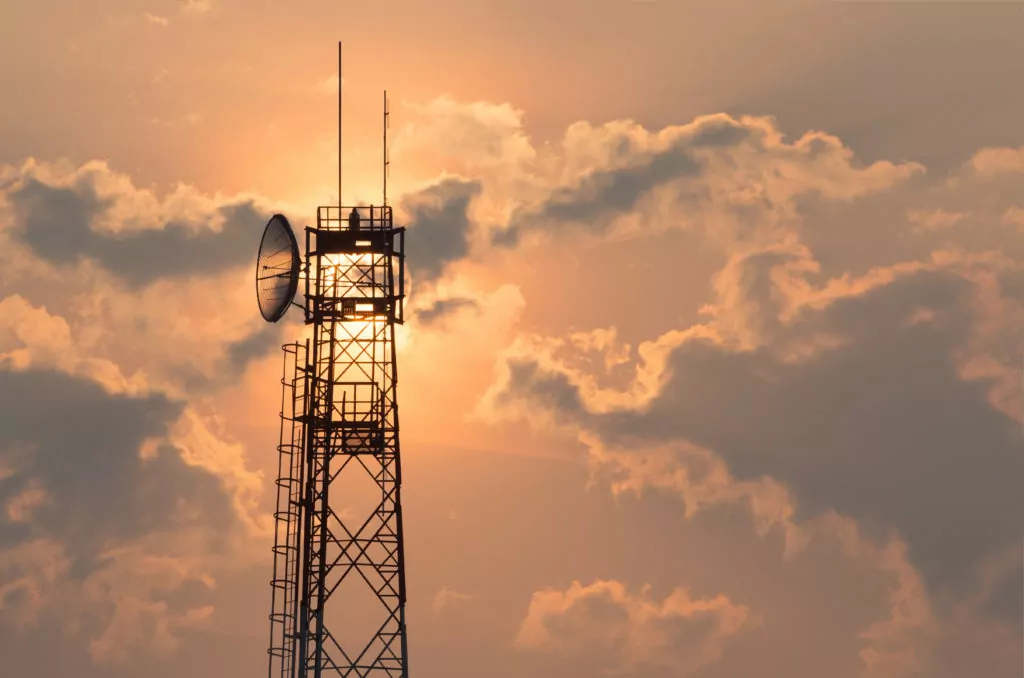Here’s how to unlock a network blocked phone:
The easiest way to unlock a network-blocked phone is to contact the carrier and have them do it.
Carriers might resist this request, in which case you will need to generate an unlock code for the phone.
There are third parties that help with this, and they can potentially unlock your phone for you.
So if you want to learn all about unlocking a network-blocked phone, then you’re in the right place.
Let’s jump right in!

Why Are Phones Locked?

It’s important to understand what these locks are in the first place.
Phone carriers build their own networks for cellular use.
This involves a lot of proprietary development, and most of the major carriers are at least in some ways incompatible with each other.
There are a lot of ways this can manifest, and one of those is carrier locking.
Any phone carrier can implement a carrier lock on a phone.
This means that the phone will only work on their network and not the others.
Carriers can do this with phones that they sell directly. They can also implement locks through SIM cards.
So, even if you bought an unlocked phone after you install a SIM card, it might tell you that the phone is locked.
For the most part, this is done so that carriers can pressure customers into staying with their service.
If you can only use the phone with them, you’re a loyal customer.
Regardless of how that makes you feel, it is legal for carriers to do this.
It is also legal and possible for a phone to be unlocked, which is what the following instructions will explain.
How Can You Unlock the Network Blocked Phone? (3 Ways)

You have a few options for trying to unlock your phone.
The first is to contact the carrier and have them do it.
If that presents challenges, you can look into third-party apps and third-party service providers.
Any of them can potentially unlock the phone, but in this practice, there are no guarantees.
Whether or not you succeed in unlocking your phone will depend on many factors, the most important of which will be covered in these explanations.
#1 Call the Carrier

You do not have to literally call the carrier.
You can contact them online or through any means you prefer.
What matters is that this method requires the carrier to provide you with the necessary unlock code in order to succeed.
To do this, you will first need the IMEI or MEID number for your phone. You can find both of these in the phone’s settings.
If you get stuck and cannot find either number, your carrier can help you with that part.
In order to unlock the phone, you will need an unlock code (or key).
This code is paired specifically to your hardware, and the serial number (IMEI or MEID) is how the correct code is matched to your phone.
With that covered, we get to the gray area. It is up to the carrier to provide this code, and typically the code is used to switch carriers.
You can see why they might be reluctant to give you this information, so things get a little weird.
If you own your phone outright, the carrier is legally obligated to provide this code.
That rule was put into place by the United States government in 2015, and carriers are not motivated to violate this rule.
That said, there are caveats and exceptions, and navigating them can be annoying.
If you try a polite approach from the start, your carrier will ultimately provide the code, but they might try to convince you to stay with their service first.
There may also be automated red tape that takes time to clear.
If you don’t own the phone outright, things get a lot more complicated.
If you have your phone on a payment plan (which is common for a lot of people these days), then technically, the carrier owns the phone, and you are leasing it from them according to your service contract.
In this case, the carrier is no longer legally obligated to give you the unlock code because you aren’t the phone’s owner.
Additionally, service contracts can negate their obligation even if you bought the phone outright.
A monetary contract can include language that creates an exception for the carrier.
So, to be sure the 2015 rule covers you, you have to have no outstanding debts or obligations to the carrier. It’s tricky.
Despite all of that, carriers will often provide the unlock code even if they are not legally required to do so.
Each carrier sets its own rules, and even those rules vary case by case.
You can expect to have to jump through some hoops and potentially pay fees, but you can contact them and see what is involved and whether or not their methods are worth your time, effort, and money.
#2 Try an App

If the carrier method doesn’t work or isn’t worth it, you can look into apps.
There are plenty of apps that claim they can unlock your phone. Some work and others don’t.
As an example, T-Mobile produced an app specifically for this purpose.
Obviously, it is capable of unlocking the phone as long as you meet the requirements.
Some third-party apps may never work.
For the most part, third-party apps function essentially by guessing the unlock code or unraveling the methods by which carriers create these codes.
To do either, they will need your IMEI or MEID number.
If the app functions, it will produce a successful unlock code. Because the methodologies are not always perfect, some of these apps will fail.
There is no perfect list of apps that work, but you can always check reviews to get an idea of success rates and how the experience is for users.
It’s similar to any other investment in a third-party app.
You won’t be sure of how much you like it unless you try.
#3 Use a Third-Party Company

On the surface, this sounds just like using an app, but a lot of third-party companies have non-app methods of unlocking your phone.
As long as you can find a reputable provider for this service, the companies tend to have good success rates.
Most claim to be able to generate an unlock code for any phone on a major carrier, and that’s a reasonable expectation for anyone seeking this method.
Once again, this requires an IMEI or MEID number.
When you provide the serial number to the service provider, they will use proprietary methods to produce the unlock code, and that’s all you need.
When it’s done, you can use your phone with the carrier of your choice.
You can expect that any of these providers will charge a fee for the service.
You can inquire about the fee and see if it is more promising than any of the methods covered above.
For many users, this turns out to be the case.
How Do You Enter the Unlock Code to Unlock Your Network Blocked Phone?

So far, we’ve gone over ways to acquire the code.
That’s really just the first step in the process.
You also need to actually unlock the phone, which requires you to enter the code.
For most phones, you will be prompted for the unlock code if you install a SIM card for a carrier other than the one that placed the lock.
In other words, you have to pick your new carrier and get a SIM card from them in order to finish the process.
When you install the new card, you’ll get a chance to enter the code and unlock the phone.
If you don’t see this prompt or have trouble with it, your new carrier will likely be willing to assist you.
They can walk you through the process. You can also look up instructions for your specific phone model on any number of online resources.
In the vast majority of cases, the hardest part in this process is acquiring the unlock code.
What if the Phone Is Blacklisted?
There’s a second kind of network block, and it constitutes an entirely different story.
Blacklisting is not the same as carrier locking.
If your phone is blacklisted, it likely will not work on any carrier.
Carriers typically share this information, and there are reasons for that.
In most cases, a device is blacklisted when it is reported stolen (although other extreme circumstances could necessitate blacklisting).
If you run into your problem, the starting point is talking to your carrier about the blacklist.
Discuss it with them and see if there is any action you can take to resolve the situation.
The answer to that question will depend heavily on the circumstances surrounding the blacklist.
Considering how often this is related to phone theft, it can help to keep your receipts or proof of purchase handy.
If you bought your phone secondhand, there is a chance that you unwittingly purchased a stolen device.
In this situation, your best bet is to cooperate with the carrier and any involved authorities.
There might be recourse for you, but you might be in a tough spot.
There is no guarantee that a carrier can remove your device from the blacklist in this scenario.
The good news is that as long as you didn’t steal the phone, you are not legally culpable.
Unfortunately, that is not enough to guarantee that you will be able to use the blacklisted phone at any point.

